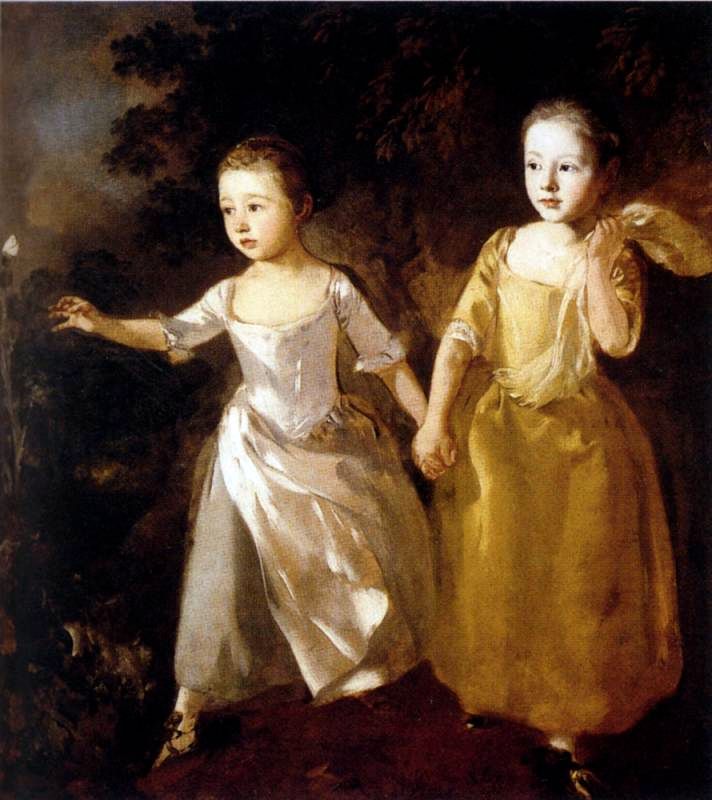
We know six double portraits of Gainsborough’s daughters. Most of them remained unfinished. Having created an image and breathed into his soul, Gainsborough cooled down to work. But a custom-made portrait could not be finished, but a portrait “for yourself” – you can. For us, portraits of the artist’s daughters are interesting precisely because they are written “for home use.”
Therefore, working on them, the master felt most free. At least, he did not have to constantly look at the wishes of the client. So, if he had written a custom portrait of a child, he would most likely have painted carefree-happy, plump crumbs, in one word – “children in general”. But his daughters, he vests “faces with an unimportant expression.” The elder Mary holds Margaret’s hand tightly, the smaller one. At first glance it seems that in this pair Mary is a slave. But this is not so.
Margaret draws her, but the oldest girl can stop her at any moment, say: “There it is impossible.” The fate of these “angels”, so beloved by their great father, was formed unhappily.
In their youth, they both fell in love with a certain Johann Fischer, an oboist and a rogue. Marry was “lucky” to marry him. Marriage, as expected, very soon broke up. After that, the sisters lived together, almost without separation. Over the years, both of them had some oddities in their behavior – Mary was sometimes depressed, and Margaret tried several times to commit suicide.
 Portrait of the artist’s daughters with a cat by Thomas Gainsborough
Portrait of the artist’s daughters with a cat by Thomas Gainsborough Portrait of Mrs. Graham by Thomas Gainsborough
Portrait of Mrs. Graham by Thomas Gainsborough Portrait of Mr. Andrews and his wife by Thomas Gainsborough
Portrait of Mr. Andrews and his wife by Thomas Gainsborough Portrait of Eneaj Lloyd with Sister Lucy by Thomas Gainsborough
Portrait of Eneaj Lloyd with Sister Lucy by Thomas Gainsborough Portrait des filles de l’artiste – Thomas Gainsborough
Portrait des filles de l’artiste – Thomas Gainsborough Blue Boy by Thomas Gainsborough
Blue Boy by Thomas Gainsborough Morning Walk by Thomas Gainsborough
Morning Walk by Thomas Gainsborough Portrait of Sarah Siddons by Thomas Gainsborough
Portrait of Sarah Siddons by Thomas Gainsborough